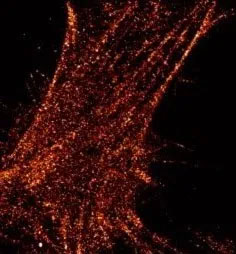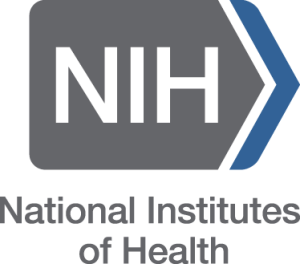Bruchez Lab
Laboratory for Fluorescence Innovation in Biology
Biological research has been propelled by the availability of fluorescent proteins that allow dynamic microscopy of living cells. The repertoire of intrinsically fluorescent proteins is substantially less diverse in form and function than the repertoire of chemically synthesized dye molecules, yet genetic targeting provides such a significant advantage that probes 2-10-fold less bright than typical organic dyes are routinely used in fluorescence imaging. Our work is focused on developing tools that couple the best of the synthetic dyes with the advantages of genetic targeting. These novel probes allow unique investigations of cell-biological and biochemical processes fundamental to our understanding of health and diseases.

NEW TOOLS FOR SINGLE MOLECULE AND SUPER RESOLUTION IMAGING
The limits of microscopy can be expanded dramatically by design and use of the right fluorescent dye molecules. Research in this area is focused on enhancing the brightness, stability and activation properties of dye molecules useful with our genetically expressed protein targets. We exploit these probes with sensitive fluorescence imaging to detect biological processes at higher resolution and longer timescales than conventionally achieved in fluorescence microscopy. These tools are applied to study the translation and folding of single molecules by the protein synthesis machinery of eukaryotic cells (the ribosome).

TARGETED TOOLS FOR PROTEIN TRAFFICKING AND SUB-CELLULAR PHYSIOLOGY
The endocytic/exocytic processes are fundamental to a wide range of biological phenomena, including immunity, allergy and synaptic transmission. Utilizing engineered proteins that fold well in the secretory pathway of cells and bind to otherwise weakly fluorescent dye molecules, we have developed a series of fluorescent pH indicators that are “activated by targeting.” These ratiometric dyes enable direct interrogation of the endocytic trafficking process and the protein fate after stimulation by biological ligands or drugs. Trafficking of receptors under the influence of genetic mutations and pharmacologic treatments provides new mechanistic and therapeutic insights into receptor action in these important biological processes. We are extending these probe designs to enable measurements of other physiological parameters at defined sub-cellular locations.


